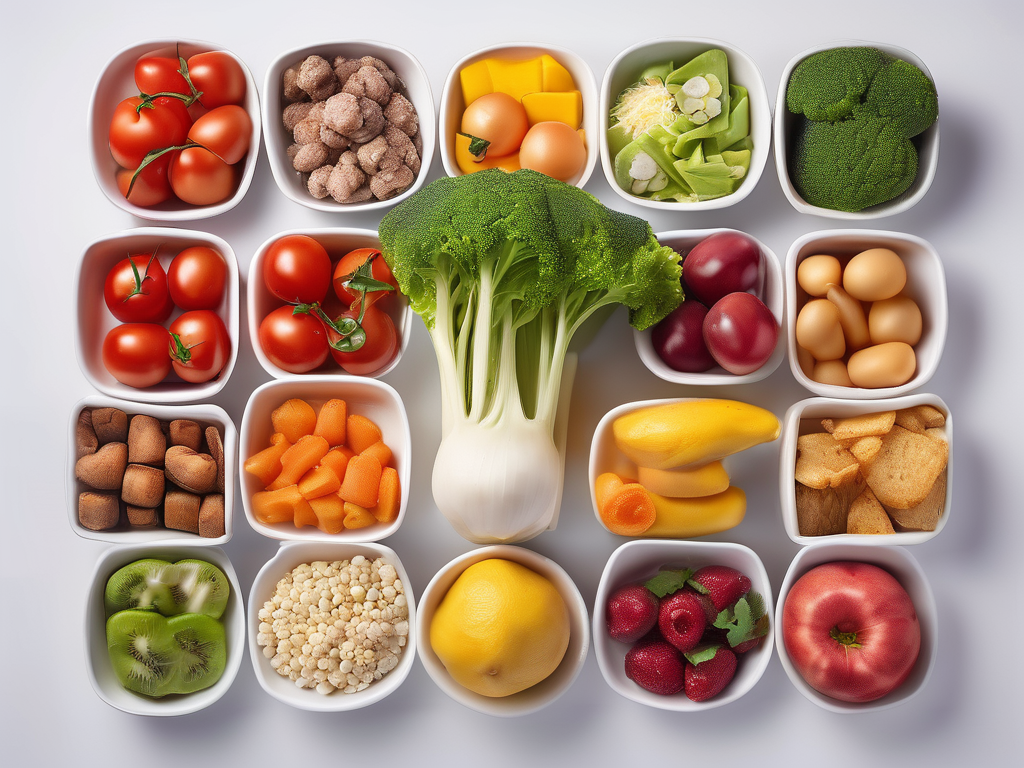
The Ultimate Guide to Long Shelf Life Foods
The Ultimate Guide to Long Shelf Life Foods
In today's fast-paced world, having a supply of long shelf life foods is essential for every household. Whether you're preparing for emergencies, looking to save money by buying in bulk, or simply want to reduce food waste, stocking up on foods with extended shelf lives can be a smart choice. In this comprehensive guide, we'll explore the best long shelf life foods to consider, how to store them properly, and important food safety tips.
Why Choose Long Shelf Life Foods?
Long shelf life foods offer several benefits that make them a convenient and practical choice for many consumers. Here are some reasons why you might want to incorporate these items into your pantry:
1. Emergency Preparedness
Having a supply of long shelf life foods can provide peace of mind during emergencies such as natural disasters, power outages, or unforeseen circumstances. These foods can sustain you and your family when fresh options are not readily available.
2. Cost-Effective
Buying foods with extended shelf lives in bulk can help you save money in the long run. These items often have a lower cost per serving compared to fresh produce or perishable goods, making them a budget-friendly option.
3. Convenience
Long shelf life foods require minimal preparation and can be stored for extended periods without spoiling. This convenience makes them ideal for busy individuals or those looking for quick meal solutions.
4. Reduced Food Waste
By stocking up on foods with long shelf lives, you can reduce the amount of food that goes to waste in your household. These items have a longer expiration date, allowing you to use them before they spoil.
Top Long Shelf Life Foods to Consider
When selecting long shelf life foods for your pantry, it's important to choose items that are nutritious, versatile, and easy to store. Here are some popular options to consider:
1. Canned Goods
- Canned beans
- Canned vegetables
- Canned fruits
- Canned soups
2. Dried Beans and Legumes
- Lentils
- Chickpeas
- Black beans
- Kidney beans
3. Rice and Grains
- White rice
- Brown rice
- Quinoa
- Oats
4. Pasta and Noodles
- Dry pasta
- Instant noodles
- Rice noodles
- Couscous
5. Shelf-Stable Dairy
- UHT milk
- Powdered milk
- Shelf-stable cheese
- Evaporated milk
Proper Storage Tips for Long Shelf Life Foods
To ensure the longevity and quality of your long shelf life foods, proper storage is key. Follow these tips to keep your items fresh and safe for consumption:
1. Store in a Cool, Dry Place
- Keep long shelf life foods away from heat sources and direct sunlight to prevent spoilage.
- Optimal storage temperature for most items is between 50-70°F.
2. Use Airtight Containers
- Transfer items like grains, pasta, and dried fruits to airtight containers to prevent moisture and pests from affecting the food.
3. Rotate Your Stock
- Practice the "first in, first out" method to ensure that older items get used first, reducing the risk of expiration.
4. Check Expiration Dates Regularly
- Monitor the expiration dates of your long shelf life foods and discard any items that have passed their prime.
Food Safety Tips for Long Shelf Life Foods
While long shelf life foods are designed to last longer than perishable items, it's essential to follow food safety guidelines to prevent foodborne illnesses. Here are some tips to keep in mind:
1. Inspect Packaging
- Before consuming any long shelf life food, inspect the packaging for signs of damage, leakage, or mold.
2. Follow Cooking Instructions
- Some long shelf life foods may require cooking or rehydration before consumption. Follow the instructions on the packaging to ensure safe preparation.
3. Practice Good Hygiene
- Wash your hands before handling long shelf life foods and ensure that utensils and surfaces are clean to prevent contamination.
4. Monitor Storage Conditions
- Regularly check the storage conditions of your long shelf life foods to ensure they are being kept in a suitable environment.
Conclusion
Incorporating long shelf life foods into your pantry is a smart and practical way to ensure you always have nutritious options available. By choosing the right items, storing them properly, and following food safety guidelines, you can enjoy the benefits of these convenient and cost-effective food choices. Stock up on your favorite long shelf life foods today and enjoy the peace of mind knowing you have a reliable food supply on hand.
Authoritative Food Safety References
These agencies and university labs inform every tip and health precaution we publish.
USDA FoodKeeper – Cold Storage Guidelines
Official refrigerator, freezer, and pantry timelines maintained by the U.S. Department of Agriculture.
Visit USDA FoodKeeperFDA Produce Safety Rule & Grower Guidance
Field-to-fridge handling practices that prevent contamination of fruits, vegetables, and leafy greens.
Visit FDA Produce SafetyCDC Foodborne Illness Prevention Hub
Surveillance-backed guidance on pathogens, symptoms, and steps to reduce foodborne illness risk.
Visit CDC Food SafetyUC Davis Postharvest Technology Center
University research detailing optimal storage atmospheres for produce after harvest.
Visit UC Davis PostharvestPenn State Extension – Home Food Preservation & Safety
Peer-reviewed extension bulletins on safe canning, chilling, and reheating practices.
Visit Penn State ExtensionScan your food directly and get instant safety info using our AI-powered camera feature.